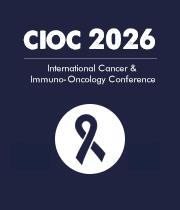Title : Unmasking the cytokine storm: A spectrum of paediatric hemophagocytic lymphohistiocytosis across immuno-oncologic, infectious, and genetic landscapes - insights from a tertiary oncology centre in South India
Abstract:
Background: Hemophagocytic lymphohistiocytosis (HLH) is a hyperinflammatory syndrome with heterogeneous triggers, ranging from genetic predispositions and immunodeficiencies to malignancies and infections. We report four paediatric cases highlighting the clinical spectrum, diagnostic dilemmas, and therapeutic challenges of HLH.
CASE 1: 14-year girl presented with fever, rash, generalized lymphadenopathy, cytopenias, and hepatosplenomegaly. Investigations revealed elevated ferritin and triglycerides; lymph node biopsy confirmed ALK-negative anaplastic large cell lymphoma , and bone marrow showed hemophagocytosis, consistent with malignancy-associated HLH. An EBV viral load of 12,340 copies/mL posed a diagnostic dilemma—HLH triggered by malignancy or EBV. As HLH in ALK-negative ALCL with EBV is rare, early HLH-2004 therapy controlled cytokine storm. Subsequently, ALCL-directed therapy initiated, but patient defaulted and succumbed, likely due to recurrent cytokine storm or progressive disease.
CASE 2: 12-year old boy with AML developed high-grade fever, cytopenias, and extreme hyperferritinemia during induction therapy. He progressed to sepsis, acute liver failure, coagulopathy, upper GI bleeding, DCT-positive autoimmune hemolytic anaemia, and ARDS requiring non-invasive ventilation. A risk-adapted, aggressive HLH approach—steroids despite infection, dose- adjusted etoposide despite liver failure, IVIg, and diuretics despite risk of hypotension —controlled cytokine storm, stabilized organ dysfunction.
CASE 3: 4-month-old female, third child of a non-consanguineous family, presented with fever, hepatosplenomegaly, pancytopenia, and hyperferritinemia. Male sibling had similar features and died undiagnosed at 11 months. Bone marrow examination showed hemophagocytosis. During hospitalization, she developed seizures, hypoglycemia, acidosis, respiratory failure, and septic shock, succumbed despite steroid therapy, genetic testing could not be performed.
CASE 4: 3-month-old female, born to third-degree consanguineous marriage, presented with fever, pallor, silvery hair, and hepatosplenomegaly had pancytopenia, hyperferritinemia, hypertriglyceridemia, and bone marrow hemophagocytosis. Hair shaft examination showed irregular pigment clumps, suggestive of Griscelli syndrome. HLH-directed therapy initiated, child developed hypertensive crisis (?steroid/etoposide induced), required five antihypertensives, altered sensorium with normal brain imaging , anasarca, LFT derangement, and respiratory distress, ultimately succumbed despite intensive care.
Conclusion: These cases highlight broad spectrum of paediatric HLH and offer critical lessons for clinical practice and future research:
Case 1: Early recognition and prompt HLH-directed therapy can control cytokine storm in malignancy-associated HLH, but strict adherence and timely disease- specific treatment are crucial to prevent recurrence and death.
Case 2: Early aggressive, risk-adapted HLH therapy should be instituted. Multidisciplinary care and timely immunosuppression can reverse cytokine- mediated organ damage even in critically ill oncology patients.
Case 3: Familial clustering highlights need for high suspicion of primary HLH in infants with cytopenias and hepatosplenomegaly; rapid diagnosis and early intervention remain crucial despite limited genetic confirmation.
Case 4: Genetic predisposition can cause severe multisystem HLH, with therapy related risks; intensive monitoring, individualized treatment, and early supportive measures are essential to prevent complications.
Future prospects: These cases highlight HLH’s evolving immuno-oncology spectrum. Future strategies should focus on early molecular diagnostics, targeted &less toxic therapies, and multidisciplinary care.



